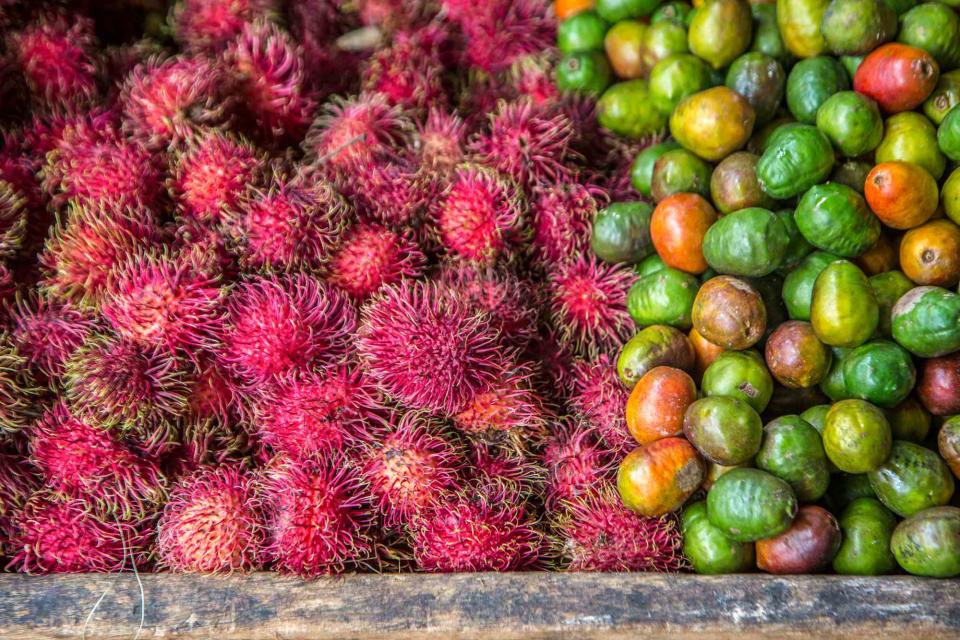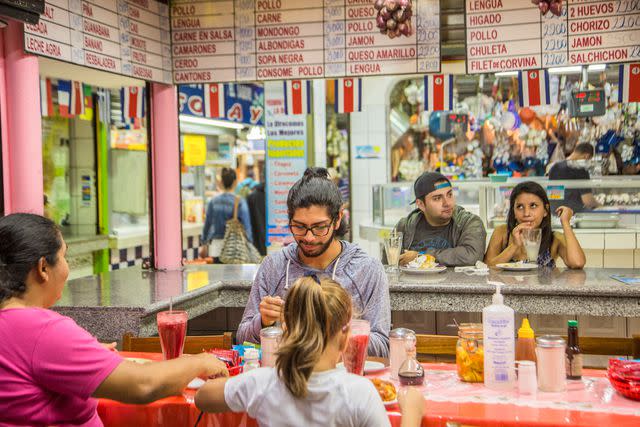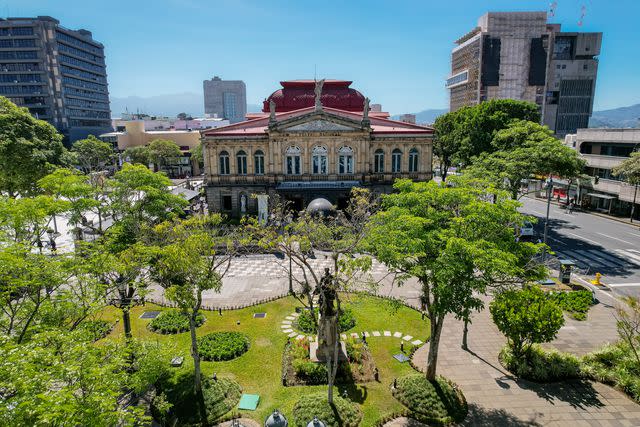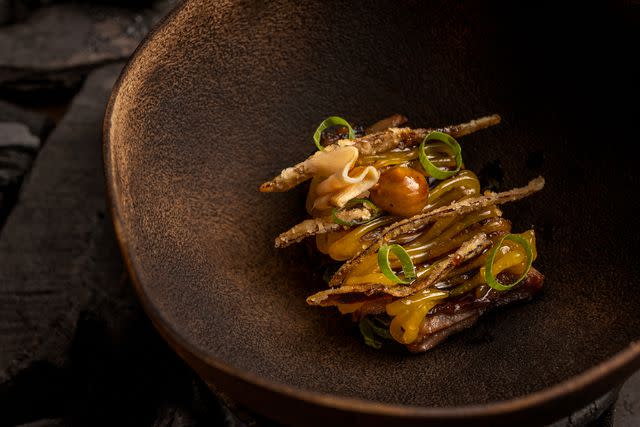Costa Rica's Biggest City Is Full of Vibrant Art, Interesting Architecture, and Delicious Food
A night or two in the Costa Rican capital yields a richer view of the country.

Monica Gumm/laif/Redux
Rambutans and other tropical fruits at the Central Market.Urban experiences may not be the first reason you visit Costa Rica, but the country’s bustling capital has lots to offer visitors. Founded less than 300 years ago, San José is one of Latin America’s youngest cities. After it was named the capital in 1832, the city experienced a boom, fueled by a coffee-growing industry that takes advantage of the country’s rich soil and cool climate at high altitudes.

Monica Gumm/laif/Redux
Diners at a food stall in the Central Market.Hotel Grano de Oro is a 40-room boutique hotel on a quiet street, just 20 minutes away from the international airport. Housed in a mansion from the early 1900s, the hotel feels like something from a bygone era with its elaborate wood paneling, handmade tiles, boldly patterned textiles, and wrought-iron bed frames.
San José’s Central Market, a pleasant 20-minute walk east of Grano de Oro, is the perfect spot to fuel up with a classic Costa Rican breakfast of gallo pinto, a dish of rice and beans with various toppings. A historic landmark in its own right, the market is a maze of alleys lined with casual restaurants and vendors selling herbs and other fresh produce, clothing, and household items.

Gianfranco Vivi/Getty Images
The National Theater of Costa Rica, in San José.On Avenida Segunda you’ll find the Neoclassical National Theater. Inspired by the Palais Garnier, the Paris opera house, this exquisite hall is clad in Italian marble and has a celebrated ceiling mural, Allegory of Coffee and Bananas, by the Italian artist Aleardo Villa, that depicts the country’s farmers.
Spend some time at the Museo de Arte y Diseño Contemporáneo, which offers exhibitions of mixed-media works by Costa Rican and international artists. Shop at nearby Tienda eÑe for locally made jewelry, clothing, and ceramics.

Santiago Fernandez Benedetto/Courtesy of Restaurante Silvestre
A dish of beef tenderloin, octopus reduction, and pickles, at Restaurante Silvestre.Barrio Escalante, once a quiet residential neighborhood east of downtown, now buzzes with restaurants, coffee shops, and boutiques. First launched as a farm-to-table restaurant, DOMA Escalante is a project from Óscar (Toribio) Hernández and Donato Morales, of the sustainable-fashion brand Toribio & Donato. Today there’s more behind the striped façade of the Spanish-colonial home: a small flower shop, a café with home-baked pastries, a design store, and a school for urban farming.
To see works by emerging Costa Rican artists, go to Galería Talentum, which was founded by Gabriela Catarinella in Barrio Otoya, an attractive neighborhood of stately old residences. For dinner, consider Restaurante Silvestre, which is set in a renovated home in Barrio Amón. Chef Santiago Fernández Benedetto, a native of the city, combines global cuisine influences with local ingredients for dishes like pasta with pesto made from culantro coyote, a cilantro-like herb, and a guava cheesecake. “You can achieve great experiences with very humble ingredients,” he says.
For more Travel & Leisure news, make sure to sign up for our newsletter!
Read the original article on Travel & Leisure.

